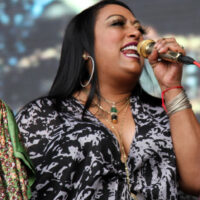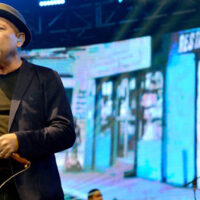
Salsa in Puerto Rico
A History of Passion and Soul

Puerto Rico has long been a hotbed of rhythms that have transcended borders. The island, with its mix of Indigenous, African, and European influences, has produced a unique musical legacy that has impacted Latin music worldwide. Salsa emerged as a result of this rich cultural convergence, where every note and every dance reflects centuries of history, resistance, and creativity. From the neighborhoods of San Juan to the streets of Ponce, salsa not only entertains but also celebrates Puerto Rican identity and connects the community through the universal language of rhythm and movement.
Salsa as a Musical Genre and Cultural Expression
Salsa, both a musical genre and a dance style, has deep roots in Puerto Rico’s cultural history. It is not merely a rhythm or a way of dancing but a powerful expression of identity, community, and resistance that has accompanied the island’s social and cultural evolution for over a century.
Salsa vividly reflects the fusion of cultures, the creativity and innovation of Puerto Rican musicians, and the enduring passion of those who dance it.
More than entertainment, salsa has served as a vehicle for cultural storytelling, resistance against social inequalities, and a way to preserve Afro-Caribbean traditions. In every neighborhood and festival, salsa tells the story of the Puerto Rican people.
Origins and Evolution of Salsa
Although salsa as we know it originated in New York in the 1960s, its true home is Puerto Rico. On the island, salsa evolved into a unique style, blending influences from Afro-Caribbean, Cuban, American, and Puerto Rican musical traditions, turning it into a global phenomenon with a distinctive signature.
Salsa has its roots in Afro-Caribbean dances and music such as bomba and plena, genres brought by African slaves during Spanish colonization. Bomba, driven by drum rhythms, and plena, known for storytelling about daily life, laid the foundation for the more complex rhythms that would shape salsa. These styles evolved alongside influences from other genres, including jazz and Cuban son.
Modern salsa began taking shape in New York, where Puerto Rican and Cuban musicians, many exiles, blended these rhythms with elements of jazz, rock, and American popular music. However, it was in Puerto Rico where salsa reached its fullest expression, merging these styles with the island’s vibrant and energetic essence. From the first salsa recordings in the 1960s, Puerto Rico played a key role in the genre’s development, creating a style synonymous with the island’s musical identity.
Salsa as an Expression of Passion and Community
Puerto Rican salsa is more than just a dance; it is a manifestation of passion, identity, and community. Fluid and fast movements, infectious rhythms, and boundless energy transform any space into a celebration of life. From family parties to street festivals, salsa is a constant in Puerto Ricans’ social lives.
Salsa dancers do more than execute steps; they convey emotions through their bodies, embraces, and connection to the music. Each step expresses joy, each turn tells a story without words. Salsa is a language that unites people, bridging generations and cultures into a single vibrant flow of energy.
In Puerto Rico, salsa is not limited to dance floors. It is heard on local radio, seen on television, and resonates through the streets during popular festivals. Everywhere on the island, from the San Sebastián Festival in Old San Juan to the streets of Ponce and Bayamón, salsa is present.
The Puerto Rican Touch: Rhythm and Electric Energy
What sets Puerto Rican salsa apart is the unmistakable energy imparted by local musicians and dancers. The clave rhythm, a syncopated pattern played on wooden sticks, forms the foundation of the music. This rhythm not only keeps time but also guides dancers, who feel the music’s pulse in their bodies.
Intricate piano montunos, congas, and timbales exploding with rhythm create a distinctive sound. Vocals that sing about the highs and lows of love, life, and social struggle often feature improvisation, giving Puerto Rican salsa its unique and authentic character.
Over the years, Puerto Rico has been home to some of the most influential salsa artists, including Héctor Lavoe, Ismael Rivera, Willie Colón, Tito Puente, Cheo Feliciano, and contemporary stars like Marc Anthony, La India, with collaborations with Celia Cruz. These legends and stars have defined Puerto Rican salsa’s sound and style, leaving an immortal legacy in Latin music.
Salsa Across Puerto Rico
Beyond the dance floor, salsa permeates every aspect of life in Puerto Rico. In every city and town, salsa can be heard—from radios at home to salsa clubs that fill the night with dance. Salsa is the soul of Puerto Rico.
Salsa festivals, such as the Puerto Rico Salsa Festival, create vibrant spaces where music becomes a grand celebration. These events attract thousands of visitors worldwide, creating an energetic atmosphere with live music and dance competitions where top performers—from veterans like El Gran Combo to modern artists like Marc Anthony and La India—showcase their talent.
The Lasting Legacy of Puerto Rican Salsa
Puerto Rican salsa remains an essential part of the island’s culture, merging traditional sounds with modern influences. Contemporary artists like Marc Anthony, La India, and the iconic Celia Cruz continue to bring salsa to international audiences, keeping the genre alive and adapting it to modern times.
Today, salsa continues to evolve but never loses its essence. Modern music still reflects resilience, celebration of life, and the unity of people. Salsa is a link between generations, a vehicle for Puerto Rican expression, and a means of preserving the island’s cultural heritage.
From the Streets of New York to the Shores of Puerto Rico
Salsa’s roots are deeply connected to the Puerto Rican diaspora in New York. During the mid-20th century, neighborhoods like the Bronx became a melting pot of musical influences. Cuban son, Puerto Rican plena, and American jazz blended to create a fresh and exciting sound.
However, it was in Puerto Rico that salsa reached its true essence, transforming from an urban trend into an authentic reflection of Puerto Rican identity. The island remains the heart of salsa, where the genre has found its home and true expression.
Experience Salsa in Puerto Rico
If you ever visit Puerto Rico, you cannot miss immersing yourself in the fascinating world of salsa. Whether learning to dance at a local school or enjoying a night at one of the many salsa clubs, the island invites you to be part of its vibrant musical history. Let the rhythm move you, feel the warmth of the island, and celebrate with Puerto Ricans the legacy of salsa—a tradition still alive and full of energy.
Classic and Modern Puerto Rican Salsa Bands and Artists
Iconic Orchestras:
1. El Gran Combo de Puerto Rico – Founded in 1962 by Rafael Ithier, known as “The University of Salsa.” Hits include Brujería, Un Verano en Nueva York, Azuquita pa’l Café.
2. La Sonora Ponceña – Founded 1954 in Ponce by Enrique “Quique” Lucca, later led by Papo Lucca. Known for sophisticated piano-driven arrangements. Hits: Fuego en el 23, Boranda, Yambeque.
3. La Selecta (Raphy Leavitt) – Founded 1971, socially conscious lyrics, emotional arrangements. Hits: La Cuna Blanca, El Buen Pastor, Payaso.
4. Cortijo y su Combo – Founded 1954, pioneering fusion of bomba, plena, and salsa. Classics: El Bombón de Elena, Quítate de la vía Perico, Maquinolandera.
5. Willie Rosario y su Orquesta – Early 1960s, energetic dance rhythms, hits: De Barrio Obrero a la 15, Anuncio Clasificado, Lluvia.
6. Roberto Roena y Su Apollo Sound – Founded 1969, fusion of salsa, funk, jazz. Hits: Que Se Sepa, Cui Cui, Traición.
7. Tommy Olivencia y Su Orquesta – Founded 1960; launched careers of Frankie Ruiz, Héctor Tricoche, Paquito Guzmán. Hits: Trucutú, Planté Bandera, Periquito Pin Pin.
8. La Terrífica – 1970s spin-off of Olivencia; Hits: Te Vas de Mí, Sonerito, Bajo, Piano y Timbal.
9. Orquesta Mulenze – 1970s; fused salsa dura with romantic styles. Hits: No Puedo Estar Sin Ti, Esa Mujer, Aquel Lugar.
10. Puerto Rican Power – – 1970s; romantic, danceable salsa. Hits: Tu Cariñito, A Donde Iras, Noche Inolvidable.
11. Orquesta Zodiac – Early 1970s; known for energetic salsa brava.
Legendary Artists:
- Ismael Rivera (“El Sonero Mayor”) – Santurce; master of soneo and improvisation.
- Héctor Lavoe – Ponce; voice of the Fania All-Stars.
- Cheo Feliciano – Ponce; baritone, salsa romántica and boleros.
- Andy Montañez – San Juan; original El Gran Combo singer.
- Ismael Miranda – Aguada; worked with Larry Harlow & Fania All-Stars.
- Frankie Ruiz – Paterson, NJ / Mayagüez; father of salsa romántica.
- Gilberto Santa Rosa – Santurce; bridges classic and romantic salsa.
- Tito Nieves s – Río Piedras; bilingual salsa hits.
- Paquito Guzmán – Santurce; romantic vocals with Tommy Olivencia.
- Héctor Tricoche – Juana Díaz; energetic performances with Olivencia.
- Lalo Rodríguezx – Carolina; salsa romántica of the 1980s.
- José “Cheo” Andújarx – Ponce; La Terrífica and 1970s bands.
- Pellín Rodríguez – Santurce; founding singer of El Gran Combo.
- Cano Estremera Santurce; master improviser (soneo).
- Marvin Santiago – San Juan; witty lyrics and street-style soneo.
Puerto Rican Salsa Timeline:
- 1950s: Bomba, plena, early orchestras, and Latin jazz emerge.
- 1960s: Golden era of bands like El Gran Combo; salsa dura dominates.
- 1970s: Salsa brava, Fania Records influence, improvisation (soneo) flourishes.
- 1980s: Salsa romántica expands to radio and TV; artists like Frankie Ruiz and Gilberto Santa Rosa rise.
- 1990s: Modern salsa fuses with pop; international recognition grows.
The Living Legacy of Salsa
Today, salsa continues to evolve without losing its essence. Contemporary artists keep bringing it to global audiences, blending tradition with modernity. Salsa is a bridge between generations, a cultural expression, and a testament to Puerto Rican identity.
Puerto Rico is and will remain the heart of salsa, where the music pulses with the heartbeat of its people, and every note tells a story of passion, resilience, and joy of a nation.
Gallery:
The Best Selection of Live Salsa Music Videos
Boricua OnLine dedicates and offers Live Salsa Music Videos for all Salsa lovers. Our purpose is to support the Salsa Music in all its extension. Here you will find Live Salsa videos of your favorite salsa artists and concerts.
[ Live Salsa Music Videos]











